Loading
Journal of Nanotechnology and Nanomaterials
ISSN: 2692-630X
All Articles
Functionalized Carbon Nano-onions for Polymer Composites
Ahmad Adlie Shamsuri
Functionalized CNOs can be tailored through chemical modifications to enhance their compatibility with various polymer matrices, a practice that has seen increasing utilization across diverse fields. This editorial article examines the role of these functionalized nanoparticles in revolutionizing polymer composites, specifying briefly the techniques for their functionalization, the general types of polymer matrices used, their effects on composite properties, and their broadening range of applications.
J Nanotechnol Nanomaterials, 2025, Volume Volume 6, Issue Issue 1, p1-3 | DOI: 10.33696/Nanotechnol.6.057
CO-Releasing Materials: Therapeutic Implications and Challenges towards Drug Discovery
Muhammad Faizan, Niaz Muhammad
Since last century, carbon monoxide (CO) generally regarded as “silent killer” and life-threatening for living organisms because of its colourless, odourless and poisonous nature. Haldane explored the poisonous nature of CO can be exerted as car-boxy hemoglobin (COHb) through hemoglobin dissociation parameters
J Nanotechnol Nanomaterials, 2020, Volume Volume 1, Issue Issue 1, p1-4 | DOI: 10.33696/Nanotechnol.1.001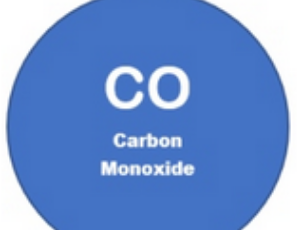
Luminescent MOFs Based on Thiazolo[5,4-d]thiazole as a Chemosensor for the Detection of Environmental Contaminants
Akram Karbalaee Hosseini, Azadeh Tadjarodi
Luminescent metal-organic frameworks (LMOFs) are considered special candidates for the sensation and detection of particular analytes. Thiazolo[5,4-d]thiazoles (TTZs) are an ideal type of heterocycles for fluorophores with π-bridge moieties demonstrating structure-function characteristics. LMOFs with excellent sensing properties can be constructed by incorporating heterocyclic aromatic thiazolo[5,4-d]thiazole into the framework.
J Nanotechnol Nanomaterials, 2024, Volume Volume 5, Issue Issue 1, p1-6 | DOI: 10.33696/Nanotechnol.5.047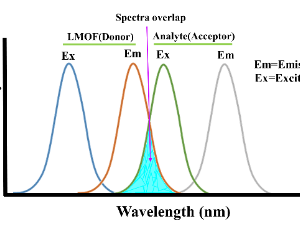
Deformation of Nanoglass under High-pressure Torsion
Yue Dong, Hans-Jörg Fecht
Metallic glasses are amorphous solids with metallic atomic bonds. Different from traditional crystalline metals, they have no long-range atomic order. Only short-range order on the scale of 0.5–1 nm can be detected. Because of the lack of a lattice dislocation slip system, as in crystalline alloys, metallic glasses exhibit some outstanding properties,
J Nanotechnol Nanomaterials, 2022, Volume Volume 3, Issue Issue 1, p1-7 | DOI: 10.33696/Nanotechnol.3.026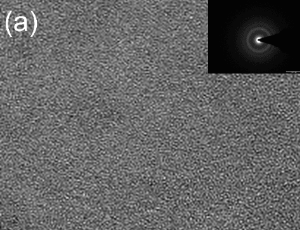
The Methods of Analysis for Determination of Metformin and Glimepiride in Different Matrices
Lobna M. Abdel-Aziz, Ahmed S. Abdelkhalek, Alyaa Antar, Emad H. Abdelraziq, Emad A. Farghaly, Emad M. Elsayed, Emad Y. Metwally, Ammar Y. Khalil, Ammar T. Khalifa, Mahmoud M. Sebaiy
In this literature review, we will introduce pharmacology in addition to most of the up-to-date reported methods that have been developed for determination of important oral hypoglycemic drugs which are metformin and glimepiride in their pure forms, combined forms with other drugs, combined forms with degradation products, and in biological samples.
J Nanotechnol Nanomaterials, 2023, Volume Volume 4, Issue Issue 1, p1-10 | DOI: 10.33696/Nanotechnol.4.037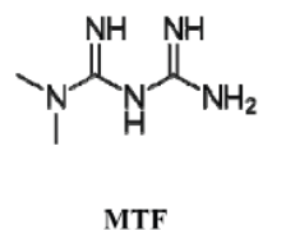
In Silico Proteome Analysis of Severe Acute Respiratory Syndrome Coronavirus 2 (SARS-CoV-2)
Chittaranjan Baruah, Saurov Mahanta, Papari Devi, Dhirendra K. Sharma
Severe acute respiratory syndrome coronavirus 2 (SARSCoV- 2) is a positive-sense, single-stranded RNA with genome size 26.2, and 31.7 kb coronavirus, covered by an enveloped structure, which is a major source of disaster in the 21st century. A typical CoV contains at least six ORFs in its genome. SARS-CoV-2 is the seventh coronavirus that is known to cause human disease.
J Nanotechnol Nanomaterials, 2021, Volume Volume 2, Issue Issue 1, p1-19 | DOI: 10.33696/Nanotechnol.2.016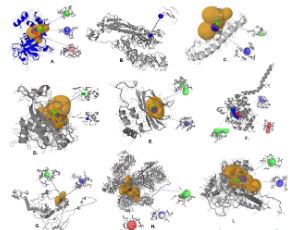
- Abstract |
- Full Text |
- Cite |
- Supplementary File
Cardiac Stents from Research to Clinical Applications
Shabnam Hashemzadeh, Saber Hashemzadeh, Fateme Bina
Early diagnosis and treatment of atherosclerosis are of vital importance in cardiology. Because of high risk and complexity of open-heart surgery, nowadays balloon angioplasty and stent implantation are common techniques to extend arterial vessels narrowed by atherosclerosis. Serious drawbacks of previous stents, such as complications induced by delayed healing and local hypersensitivity reactions and so re-narrowing and vascular reocclusion, have led to the development of stent designs, stent delivery systems, ultrasonic guidance of stent situation, and high-pressure dilatation post-stenting modifications [2-5].
J Nanotechnol Nanomaterials, 2025, Volume Volume 6, Issue Issue 1, p4-11 | DOI: 10.33696/Nanotechnol.6.058
Development of Metal Oxide Nanoparticles as Semiconductors
Ahmed M. Abu-Dief
The variety of methods employed during the fabrication of MONPs can alter the characteristics and control the properties of the obtained nano-oxides. The reaction mechanisms and, therefore, the functionality of nanostructured MOx depend on their composition
J Nanotechnol Nanomaterials, 2020, Volume Volume 1, Issue Issue 1, p5-10 | DOI: 10.33696/Nanotechnol.1.002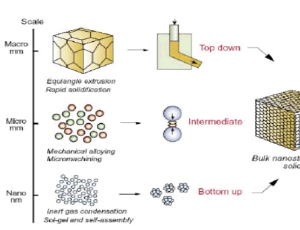
The Effect of Nano-Encapsulated Orlistat on Prostate Cancer: An In vitro Study
Ferah Armutcu, Bahattin Adam
Background: The targeted inhibition of fatty acid synthase (FASN) by Orlistat, a potent FASN inhibitor, has been shown to block tumor proliferation and induce apoptosis in cultured tumor cells. Since Orlistat is insoluble, its solubility in blood circulation is limited. Cancer nanotherapeutics are rapidly progressing and are being implemented to solve several limitations of conventional drug delivery systems.
J Nanotechnol Nanomaterials, 2024, Volume Volume 5, Issue Issue 1, p7-14 | DOI: 10.33696/Nanotechnol.5.048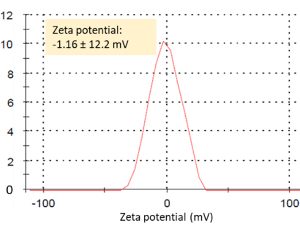
A Comprehensive Commentary of “Smart Design of High-Performance Surface Enhanced Raman Scattering Substrates”
Xiangyu Meng, Lin Qiu, Xiaotian Wang, Lin Guo
Recently, our group published a review about surface enhanced Raman scattering (SERS) in SmartMat, which summarized the recent developments of noble metal and semiconductor SERS substrates, and then proposed the key factors for substrate design and future directions.
J Nanotechnol Nanomaterials, 2022, Volume Volume 3, Issue Issue 1, p8-10 | DOI: 10.33696/Nanotechnol.3.027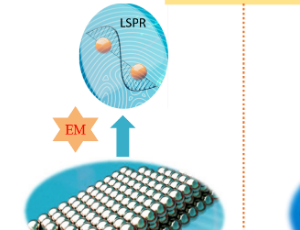
Exploiting Nanotechnology to Target Viruses
Sérgio Antunes Filho, Otávio Augusto Leitão dos Santos, Mayara Santana dos Santos, Bianca Pizzorno Backx
Infectious diseases caused by microorganisms of the most varied natures and by viral entities cause millions of deaths every year. Around the world, viral infections have impacted civilizations’ circumstances since the earliest times, including the current panorama of the SARS-CoV-2 pandemic known as coronavirus disease in 2019 (COVID-19). In this sense, in the last century,
J Nanotechnol Nanomaterials, 2020, Volume Volume 1, Issue Issue 1, p11-15 | DOI: 10.33696/Nanotechnol.1.003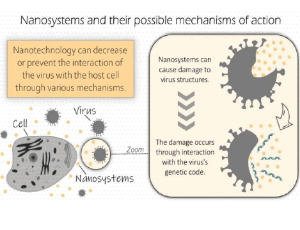
Small Scale Propulsion: How Systematic Studies of Low Reynolds Number Physics Can Bring Micro/Nanomachines to New Horizons
Paul Wrede, Mariana Medina-Sánchez, Vladimir M. Fomin
Miniaturization can be considered as the main driving cause for the tremendous technological advances within the last decades. Besides smaller and faster mechanical and electrical devices, scientists engineered new machines at the micro- and nanometer scale also referred to as micro-/ nanomotors, -swimmers or -robots.
J Nanotechnol Nanomaterials, 2022, Volume Volume 3, Issue Issue 1, p11-16 | DOI: 10.33696/Nanotechnol.3.028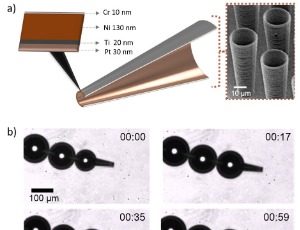
A Comprehensive Review of DNA Origami Stabilization Techniques
Lionel Yan
In recent years, DNA has emerged as a powerful tool in the field of nanotechnology. The DNA origami technique is largely responsible for this, revolutionizing nanofabrication due to its controllability, precision, and ability to leverage DNA’s unique properties. The technique consists of folding a long, single-stranded DNA (called a scaffold strand) by binding it with shorter staple strands to create almost any shape desired.
J Nanotechnol Nanomaterials, 2023, Volume Volume 4, Issue Issue 1, p11-18 | DOI: 10.33696/Nanotechnol.4.038
Recent Advances in Different Nanoprecipitation Methods for Efficient Drug Loading and Controlled Release
A. W. Zaibudeen
Nanoprecipitation has emerged as a versatile and efficient technique for formulating nanoparticles, providing significant advantages in drug delivery applications. Nanomaterials, particularly polymer nanoparticles (PNPs), play a crucial role in encapsulating and controlling the release of drug molecules, serving as an alternative to traditional drug delivery methods. Various types and morphologies of PNPs have been synthesized using different nanoprecipitation methods that are being used as drug carriers, demonstrating superior performance in targeted drug delivery with controlled release compared to conventional methods.
J Nanotechnol Nanomaterials, 2025, Volume Volume 6, Issue Issue 1, p12-25 | DOI: 10.33696/Nanotechnol.6.059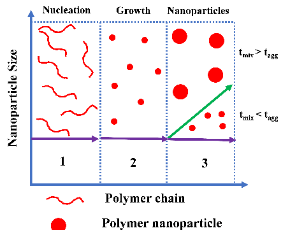
Assessment of Stability of Early Loaded Nano Coated Hydroxyapatite Implants in Posterior Maxilla
Ola Abdelsamad Amin, Ingy Mohamed Shehata, Heba M. Kamel, Nader Nabil Elbokle
Aim: The aim of the study was to assess the stability after early loading of nano coated hydroxyapatite implants in posterior maxilla. Methodology: This study was conducted on nine patients with at least a missing one maxillary posterior tooth. Ten Nano-coated hydroxyapatite implants (ETIII NH implant by Hiossen) were inserted in nine patients, and then subjected to early loading according to the secondary stability readings taken by Osstell®.
J Nanotechnol Nanomaterials, 2024, Volume Volume 5, Issue Issue 1, p15-21 | DOI: 10.33696/Nanotechnol.5.049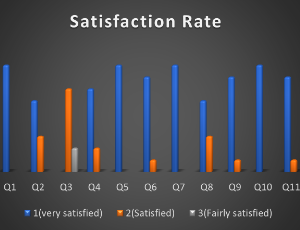
Bioconjugation of AuNPs with HPV 16/18 E6 Antibody through Physical Adsorption Technique
Lucy Muthoni Mwai, Mutinda C. Kyama, Caroline W. Ngugi, Edwin Walong
HPV 16/18 E6 oncoprotein has been evaluated as a useful biomarker with prognostic abilities as it can detect pre-cancer and cancerous states of cervical cancer progression. A positive E6 assay indicates a high correlation to the cervical cancerous phenotype, not the potential for cervical cancer, thus high specificity in triaging patients during screening. E6 levels of expression associate directly with the severity of cervical intraepithelial neoplasia (CIN) lesions and the risk of
J Nanotechnol Nanomaterials, 2020, Volume Volume 1, Issue Issue 1, p16-22 | DOI: 10.33696/Nanotechnol.1.004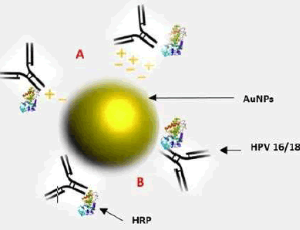
Natural and Forced Convection in Multi-Phasic Electrochemical Systems
Soufiane Abdelghani-Idrissi, M.BA. Freville, Annie Colin
Multi-phasic electrochemical systems such as electrolyzers or metal-air batteries are intimately linked to energy transition and are at the heart of new scientific advances and modern industrial development. The presence of gas phases, inherent to the processes, directly impacts the performance and stability of the systems.
J Nanotechnol Nanomaterials, 2023, Volume Volume 4, Issue Issue 1, p19-28 | DOI: 10.33696/Nanotechnol.4.039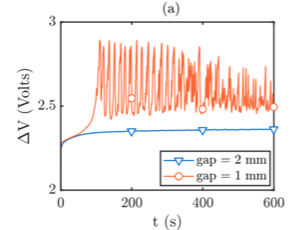
Emerging Nanogenerators for Rehabilitation Monitoring and Information Interaction
Bojing Shi, Zhuo Liu, Han Ouyang, Yubo Fan
Patients with limb motor dysfunction caused by trauma and stroke have poor mobility to take care of themselves, which seriously affects the quality of life of them. Through reasonable rehabilitation training, the damaged motor function can be relieved to a certain extent. In the rehabilitation training, the monitoring of limb movement can reflect the recovery state of patients’ physiological function and make a systematic evaluation on the rehabilitation training effect of patients,
J Nanotechnol Nanomaterials, 2021, Volume Volume 2, Issue Issue 1, p20-24 | DOI: 10.33696/Nanotechnol.2.017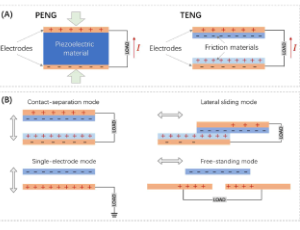
Commentary on “Review on Nanocrystalline Silicon Thin Films for Heterojunction Solar Cells”
Mansi Sharma
The article presents a commentary for the recent publication on nanocrytalline silicon thin films for heterojunction solar (SHJ) cells. The aim of the communication is to highlight some of the important mechanism discussed in the report for improved structure and interface properties which results in better device fill factor and hence enhanced efficiency. Furthermore, the discussion has been extended to present some of the recent literatures which have followed the similar guidelines for material synthesis with improved optical gain in applications of SHJ solar cells.
J Nanotechnol Nanomaterials, 2024, Volume Volume 5, Issue Issue 1, p22-25 | DOI: 10.33696/Nanotechnol.5.050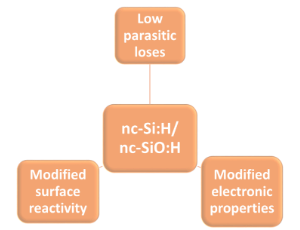
Structural Characterization of Commercial Graphite and Graphene Materials
It-Meng Low, Hani Manssor Albetran, Michael Degiorgio
The most important elemental-carbon-based materials include zero-, one-, two-, and three-dimensionalstructured fullerenes, carbon nanotubes, graphene, and graphite, respectively. These non-metallic carbon materials have properties that are similar to semiconducting metals.
J Nanotechnol Nanomaterials, 2020, Volume Volume 1, Issue Issue 1, p23-30 | DOI: 10.33696/Nanotechnol.1.005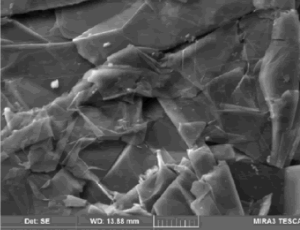
Nanofibers Based on Concentrated Collagen Hydrolysate Loaded with Essential Oils
M. D. Berechet, C. Gaidau, A. Miletic, B. Pilic, D. Simion, M. Râpă, M. Stanca, R.Constantinescu
The manufacture of scaffolds for wound healing has become important, especially the formation of tissuespecific scaffolding. In order to create scaffolds, it is essential to mimic the chemical composition, physical morphology and biological functions of the human body. Scaffolds can be created by using synthetic polymers (e.g. polycaprolactone) or natural polymers (e.g. chitosan) or a combination of both. The addition of natural polymers can be very advantageous as they can avoid
J Nanotechnol Nanomaterials, 2021, Volume Volume 2, Issue Issue 1, p25-40 | DOI: 10.33696/Nanotechnol.2.018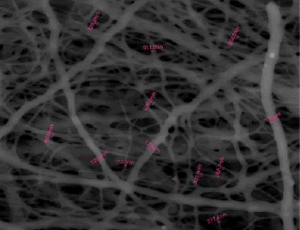
Comment on “Cholesterol Induced Asymmetry in DOPC Bilayers Probed by AFM Force Spectroscopy”
Dhruva Bhat, Appala Venkata Ramana Murthy
In the recent article, Adhyapak et al., used Atomic Force Microscopy (AFM) and Force Spectroscopy to investigate the influence of cholesterol on the phase state behaviour of fluid phase DOPC membranes and found that the excess cholesterol conditions (above 20%) can induce an asymmetry in the lipid bilayer leading to changes both topography and more significantly in the nanomechanical properties of the lipid bilayer.
J Nanotechnol Nanomaterials, 2025, Volume Volume 6, Issue Issue 1, p26-27 | DOI: 10.33696/Nanotechnol.6.060
Hybridized Luminescent Lanthanide Super Crystals Used as Spectral Convertors to Increase Photoconductivity in Opto-Electronic Devices
Alexis Bullock
Discovering new forms of energy has been essential for the innovation of more efficient technologies in the future and is a phenomenon in optical and scientific industries worldwide. A solar cell converts electromagnetic radiation or artificial light into energy due to the photovoltaic effect. Solar cell efficiency has increased over the years due to different device material and design. Lanthanide elements are the interest for solar cell research due to their absorption of lost photons by utilizing the photoelectric effect.
J Nanotechnol Nanomaterials, 2024, Volume Volume 5, Issue Issue 1, p26-30 | DOI: 10.33696/Nanotechnol.5.051
A Review on Nanotechnology: Applications in Food Industry, Future Opportunities, Challenges and Potential Risks
Monalisha Sahoo, Chirasmita Panigrahi, Siddharth Vishwakarma, Jayant Kumar
Nanotechnology is an evolving revolution with enormous promise in a variety of fields, including mechanics, medicine, and the food business. Nanoparticles owing to having greater surface area and enhanced rates of mass transfer seem to pose higher biological and chemical activities, penetrability, catalytic behaviour, enzymatic reactivity, and quantum
J Nanotechnol Nanomaterials, 2022, Volume Volume 3, Issue Issue 1, p28-33 | DOI: 10.33696/Nanotechnol.3.029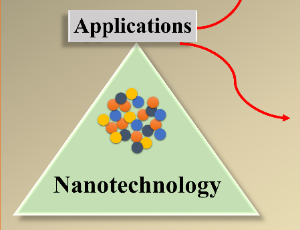
Nanoscale Diagnosis and Therapy: Nanotheranostics as an Advance in Nanotechnology
Bianca Pizzorno Backx
The term "nanotechnology," introduced in 1986, refers to the emergence of a novel technology poised to transform existing protocols at the nanoscale. For many years, publications regarding nanotechnology have generated significant expectations related to discoveries and solutions. In 1990, with the inception of green chemistry, the scientific community began to reassess its approach, inspired by adaptations of protocols established by various eco-friendly institutions.
J Nanotechnol Nanomaterials, 2025, Volume Volume 6, Issue Issue 1, p28-42 | DOI: 10.33696/Nanotechnol.6.061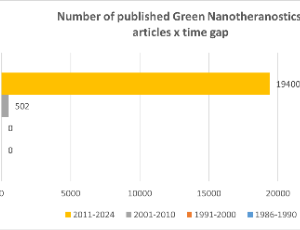
Promoting Carbon Dioxide Reduction via Operando Surface Reconstruction
Yanli Sun, Ke Chen, Mengyu Li, Bingyuan Zeng, TingTing Xia, Zumin Wang, Jian Qi, Kun Zhao
It is of great significance to study the dynamic reconstruction effect in variously heterogeneous catalytic reactions, such as electrocatalysis, thermal catalysis, including photocatalysis. So, the atomic or electronic structure change of the catalyst during the reaction processes should be deeply explored to understand the nature of the exact active sites [1-5].
J Nanotechnol Nanomaterials, 2023, Volume Volume 4, Issue Issue 1, p29-32 | DOI: 10.33696/Nanotechnol.4.040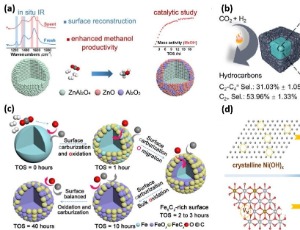
Development of HPV 16/18 E6 Oncoprotein Paperbased Nanokit for Enhanced Detection of HPV 16/18 E6 Oncoprotein in Cervical Cancer Screening
Lucy Muthoni Mwai, Mutinda C. Kyama, Caroline W. Ngugi, Edwin Walong
According to global cancer statistics GLOBOCAN, carcinoma of cervix is ranked as the fourth most common malignancy among women worldwide with an estimation of 570,000 cases and 311,000 deaths in 2018. It is the second most common female malignancy in Lowand- Middle Income Countries (LMICs). In Kenya, the prevalence is 25 cases per 100,000 women. Approximately 75% cases of cervical cancer are caused by persistent infections of the cervical mucosal epithelium with carcinogenic types of human papillomaviruses (HPVs) mainly 16 and 18.
J Nanotechnol Nanomaterials, 2020, Volume Volume 1, Issue Issue 2, p31-45 | DOI: 10.33696/Nanotechnol.1.006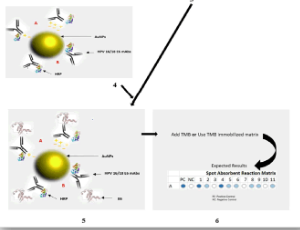
Biosynthesis of Manganese Dioxide Nanoparticles and Optimization of Reaction Variables
Abelneh Terefe Mekuria
Biosynthesis is an efficient and environmentally friendly process used to synthesize nanoparticles. This study presents a simple, environmentally friendly, and cost-effective method for synthesizing manganese dioxide nanoparticles from aqueous manganese (II) acetate using lemon extract as a reducing agent. Turmeric extract (curcumin) was employed to stabilize the biosynthesized nanoparticles. UV-visible spectroscopy was used to evaluate the concentration of nanoparticles at 350 nm wavelength.
J Nanotechnol Nanomaterials, 2024, Volume Volume 5, Issue Issue 1, p31-45 | DOI: 10.33696/Nanotechnol.5.052
Fire Risk Rating Assessment for Wood Specimens Coated with Flame Retardant
Eui Jin, Yeong-Jin Chung
Chung's equations-II, -III, and -IV were applied to evaluate the fire risk and fire risk ratings of flame retardants. As an example, a wood specimen coated with a flame retardant was selected and tested using a cone calorimeter according to the ISO 5660-1 standard. The external heat flux was fixed to 50 kW/m2. Fire performance index-III used three variables to evaluate the initial fire risk:
J Nanotechnol Nanomaterials, 2023, Volume Volume 4, Issue Issue 1, p33-37 | DOI: 10.33696/Nanotechnol.4.041
Microencapulsation: Probiotics, Prebiotics, and Nutraceuticals
Ekta Jagtiani, Sachin Adsare
Numerous studies have been advanced to establish a link between gut health and immunological function and to explain how probiotics, prebiotics, nutraceuticals affect the gut microbiota and immune function. A probiotic must possess favourable technical features, be able to live in the upper gastrointestinal system, and operate in the gut
J Nanotechnol Nanomaterials, 2022, Volume Volume 3, Issue Issue 1, p34-60 | DOI: 10.33696/Nanotechnol.3.030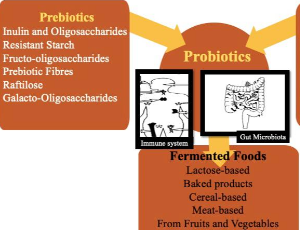
Theoretical Investigations of Dye-Sensitized Solar Cells
Jing Chen, Andreas L. Vishart, Stephan P. A. Sauer, Kurt V. Mikkelsen
This presentation considers theoretical investigations of dye-sensitized solar cells (DSSC). Theoretical methods were applied to investigate the interactions between titanium dioxide nanoparticles and sensitizers. The ONIOM model was used to obtain the geometries of different conformers of dye molecules with TiO2 and their binding energies. TD-DFT calculations were carried out to obtain the absorption spectra and the relative orbital energy levels of sensitizers and TiO2.
J Nanotechnol Nanomaterials, 2023, Volume Volume 4, Issue Issue 2, p38-54 | DOI: 10.33696/Nanotechnol.4.042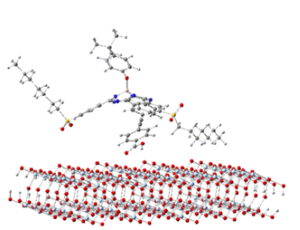
Functionalized Folic Acid with Chitosan and PAMAM Dendrimers for Delivery of DNA and RNA
P. Chanphai, T.J. Thomas, H. A. Tajmir-Riahi
The conjugation of polymers with multiple targeting ligands has become a popular approach for targeted gene and drug delivery. Functionalized polymer–drug conjugates are increasingly used to obtain biodegradable, targeted tools to further enhance localized gene and drug delivery systems. Folic acid (FA)-conjugated biodegradable polymers were tested as effective gene and drug delivery tools. Folate receptors are cellular markers highly expressed in various cancer cells and on
J Nanotechnol Nanomaterials, 2021, Volume Volume 2, Issue Issue 1, p41-50 | DOI: 10.33696/Nanotechnol.2.019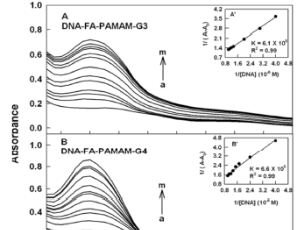
Cutting-Edge Nanoparticle Innovations in Biomedical Science: Synthesis, Applications, Challenges, and Future Prospects
Joicy John
Nanoparticles (NPs), identified as particles measuring between 1 and 100 nanometers, exhibit distinct physical and chemical properties that set them apart from larger materials. These attributes, which encompass a substantial surface area relative to volume and quantum phenomena, render them highly across various sectors.
J Nanotechnol Nanomaterials, 2025, Volume Volume 6, Issue Issue 1, p43-66 | DOI: 10.33696/Nanotechnol.6.062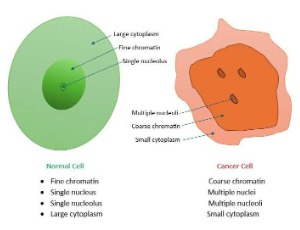
A Review Study on the Sources of Biosynthesis of Nanoparticles from Different Organisms and Their Applications in Nanomedicine
Hafiza Farhat, Kainat Iqra, Shahid Ullah
Nowadays nanoparticles is gaining much attention across the world among the researchers. From last few decades, green nanotechnology also emerging as a significant approach in order to synthesize and fabricate the nanoparticles from different organisms. This green route stabilizing the agents from biological agent for the formation of nanoparticles. The present review article aims is to elaborate the ongoing emergence of nanoparticle formulation from different microbiota.
J Nanotechnol Nanomaterials, 2024, Volume Volume 5, Issue Issue 1, p46-55 | DOI: 10.33696/Nanotechnol.5.053
Multidirectional Benefits of Nanotechnology in the Diagnosis, Treatment and Prevention of Tuberculosis
Monika Gupta, Shivangi, Laxman S. Meena
Despite the curious advancement in medical science and therapeutics, tuberculosis (TB) persist the primary factor of mortality than any other infectious disease and socioeconomic disaster for millions of people around the world. According to the World Health Organization (WHO), World’s One-third of the population is infected with this disease and of these, 8 to 10 million people develop active disease and 2 million people die each year and the rest of the infected people remain asymptomatic.
J Nanotechnol Nanomaterials, 2020, Volume Volume 1, Issue Issue 2, p46-56 | DOI: 10.33696/Nanotechnol.1.008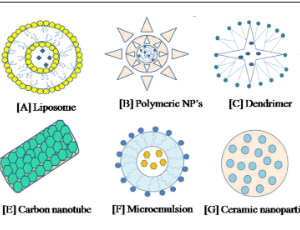
Nanotechnology in Water Treatment: An Optimistic Perspective for the Near Future
Bruna Maria Praun Pereira, Bianca Pizzorno Backx
Unequal access to drinking water and basic sanitation are old issues in Brazil and worldwide. Besides, this situation foments the proliferation of infectious parasitic diseases. Moreover, mainly in underdeveloped countries, it victimizes socioeconomically vulnerable people. The degree of water contamination analysis, usually by fecal matter, is made by the number of microorganisms present in the sample, including Escherichia coli or thermotolerant coliforms. In addition, several
J Nanotechnol Nanomaterials, 2021, Volume Volume 2, Issue Issue 1, p51-56 | DOI: 10.33696/Nanotechnol.2.020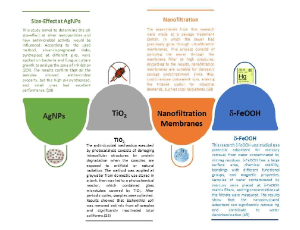
Key Features in the Design and Function of Nanocarriers for Intranasal Administration of Gene Therapy in Huntington Disease
Oksana Fihurka, Stephen Aradi, Vasyl Sava, Juan Sanchez-Ramos
A major obstacle to fulfilling the therapeutic promise of gene therapies for hereditary brain diseases, such as Huntington’ Disease (HD), is the requirement for viral vectors and/or an invasive delivery system (stereotaxic injection into brain or infusion into the intrathecal space). HD is an autosomal dominant neurodegenerative disease for which several clinical trials have demonstrated gene-lowering effects following intrathecal administration.
J Nanotechnol Nanomaterials, 2023, Volume Volume 4, Issue Issue 2, p55-69 | DOI: 10.33696/Nanotechnol.4.043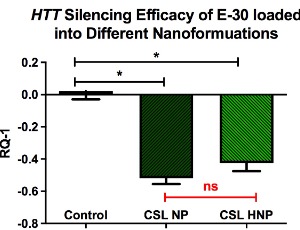
Commentary on “Cosmic Baby and the Detection of a New Compact Star —the “Triaxial Star” : A Possibility”
Ramen Kumar Parui
The article represents a commentary for the recent publication on Cosmic Baby. The aim of this communication is to highlight three invaluable applications in searching the triaxial stars, such as (i) in the secondary component of the GW190814 event (ii) Neo-Natal triaxial star, iii) Gold nanostar inside the crust of neutron star. A similar of rod-like, cube-like, slab-like structure formation both in the earth-based laboratory, and in the space-based laboratory inside the neutron star crust offer a challenge to the astronomers
J Nanotechnol Nanomaterials, 2024, Volume Volume 5, Issue Issue 2, p56-60 | DOI: 10.33696/Nanotechnol.5.054
Engineered Rh Nano-networks on DNA for SERS Applications
Sangeetha Kumaravel, Kannimuthu Karthick, Selvasundarasekar Sam Sankar, Arun Karmakar, Subrata Kundu
The study of surface and interfacial science via analytical techniques is a growing interest in the easy mode of diagnosing probe molecules adsorbed on the surface. In that line, Raman spectroscopy is an analytical method that is inefficient to carry the surface analysis employing their weak cross-sectional scattering until the discovery of Surface-Enhanced Raman Scattering (SERS) in late 1970s
J Nanotechnol Nanomaterials, 2020, Volume Volume 1, Issue Issue 2, p57-64 | DOI: 10.33696/Nanotechnol.1.007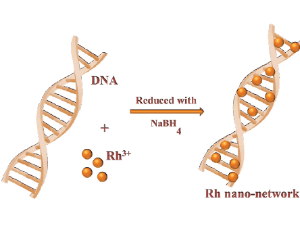
Folic acid-chitosan Nanomaterials for delivery of dietary polyphenols
P. Chanphai, H. A. Tajmir-Riahi
Despite the health benefits associated with polyphenols, the bioavailability of many polyphenols limits their effects. Problems with poor solubility fast-metabolism and food preparation techniques limit the bioavailability and bioactivity of these dietary micronutrients. Encapsulation of polyphenols has shown to protect and increase bioavailability of these dietary compounds and to enhance their anticancer activity.
J Nanotechnol Nanomaterials, 2021, Volume Volume 2, Issue Issue 2, p57-66 | DOI: 10.33696/Nanotechnol.2.021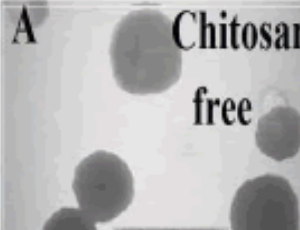
More Compelling Device Physics Based Insights over Subthreshold Slope (Swing) Saturation Near Cryogenic Temperatures for n-FET and p-FET
Nabil Shovon Ashraf
It has been observed through experimental computation that subthreshold slope (swing) (SS) for n-FET and p-FET operating at cryogenic temperatures, reaches a fluctuating saturation value violating the thermionic emission related Boltzmann limit that at T = 0 K, SS should pass through the origin when SS plotted on Y-axis and temperature T plotted in the X-axis.
J Nanotechnol Nanomaterials, 2024, Volume Volume 5, Issue Issue 2, p61-63 | DOI: 10.33696/Nanotechnol.5.055
How to Compare and Select Flame Retardants for Rigid Polyurethane Foam
Ya Xuan Thong, Xiaodong Li, Xi Jiang Yin
Polyurethane (PU) foam is synthesised via a polymerisation reaction of polyol and isocyanate, in the presence of various formulations of catalysts and surfactants. For this reason, depending on the composition, PU foam can be tailor-made into flexible foams, semi-rigid foams, and/or rigid foams, resulting in a wide range of products with unique properties.
J Nanotechnol Nanomaterials, 2022, Volume Volume 3, Issue Issue 2, p61-66 | DOI: 10.33696/Nanotechnol.3.031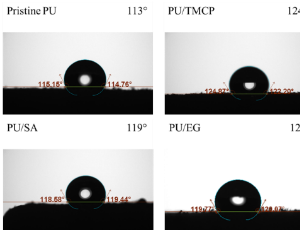
Nanodiamonds in Polymer Hybrid Composites
Ahmad Adlie Shamsuri
Nanodiamonds are nano-sized particles of diamond. They are gaining prominence in the field of material science due to their unique properties, such as high surface area, excellent thermal conductivity, and superior mechanical strength. When incorporated into polymer matrices, nanodiamonds contribute significantly to the enhancement of the composite’s overall performance.
J Nanotechnol Nanomaterials, 2024, Volume Volume 5, Issue Issue 2, p64-66 | DOI: 10.33696/Nanotechnol.5.056
Ligand-free Few Atoms Ag Nanoclusters Synthesis and Their Potential Application as Photocatalytic Agents
Jesica M. J. Santillán, David Muñetón Arboleda, Diego Muraca, Daniel C. Schinca, Lucía B. Scaffardi
Reducing the size of a metal from macroscopic to the nanoscale generates a scaling behavior in physical and chemical properties due to the large surface-to-volume fraction. While a further size reduction to small clusters under 2 nm (<~100 atoms) yield geometric and electronic structurwhich are still different from their nanoparticle (NP) counterpart.
J Nanotechnol Nanomaterials, 2020, Volume Volume 1, Issue Issue 2, p65-71 | DOI: 10.33696/Nanotechnol.1.009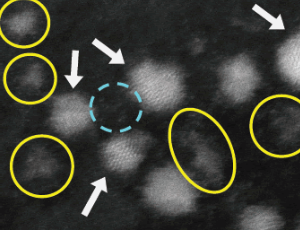
Detection of Viruses and Development of New treatments: Insights into Antibody-Antigen Interactions and Multifunctional Lab-On-Particle for SARS CoV-2
Martin Amé, Esraa Samy Abu Serea, Ahmed Esmail Shalan, A. Guillermo Bracamonte
The Corona Virus disease is a severe respiratory problem generated via severe acute respiratory syndrome coronavirus 2 (SARS CoV-2). The latest strain of the disease was deadly enough to halt the global routines of human development. In this context, a number of research studies have been conducted to provide knowledge and to combat with this severe illness.
J Nanotechnol Nanomaterials, 2021, Volume Volume 2, Issue Issue 2, p67-75 | DOI: 10.33696/Nanotechnol.2.022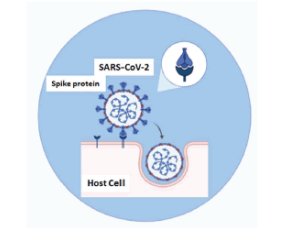
Development of Functional Nano-, Micro-Biostructures with Generation of New Enhanced Light Pathways for Life Science Applications
Daniela Alejandra Quinteros, M. Valeria Amé, A. Guillermo Bracamonte
Life sciences involve a broad overview of fundamental research of high interest, accompanied by the development of applications based on emerging needs. The generation of non-classical light is a high-impact area of research that could lay the foundation for functional materials, particularly in applications requiring tracking and switchable (on/off) properties. In this regard, the present communication is intended to present and discuss how natural and synthetic bio-structures, along with Nanotechnology, could provide versatile platforms for developing functional and multi-functional structures accompanied by the generation of novel non-classical light pathways.
J Nanotechnol Nanomaterials, 2025, Volume Volume 6, Issue Issue 1, p67-75 | DOI: 10.33696/Nanotechnol.6.063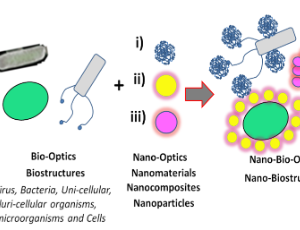
Photocatalytic Degradation of Organic Dyes Using Titanium Dioxide (TiO2) and Mg-TiO2 Nanoparticles
Sandesh Jaybhaye, Nikita Shinde, Shrutika Jaybhaye, Himanshu Narayan
Titanium dioxide (TiO2 ) based nano-sized photocatalysts (NPCs) were synthesized following a green method from the extract of Peepal (Ficus religiosa) leaves and titanium tetrachloride as precursors. Doping of TiO2 with Magnesium (Mg) was done using magnesium chloride through the method of chemical precipitation. Size of the NPC samples were estimated and characterized by CPS Disc Centrifuge, Diffracted Light Scattering (DLS) and Field Emission Gun Scanning Electron Microscopy (FEG-SEM) techniques.
J Nanotechnol Nanomaterials, 2022, Volume Volume 3, Issue Issue 2, p67-76 | DOI: 10.33696/Nanotechnol.3.032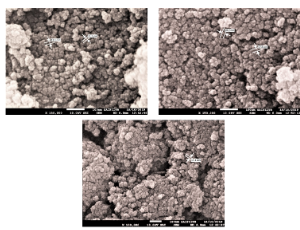
Immobilized Cell Bioreactor Industrialization in the Development of an Innovative Optical Biosensor Technology
Athanasios A. Koutinas, Theano Petsi, Athanasia Panitsa, Maria Kanellaki
This commentary shows the development of a new optical biosensor, based on cell immobilization of Pseudomonas Fluorescens HK44, in nano and micro-tubular cellulose (TC) and a mixture of carbohydrate nanotubes (CHNTs) and carbohydrate micro-tubes (CHMTs). Methodology follows, this biocatalyst can be industrialized with the use of a single tank immobilized cell bioreactor (ICB).
J Nanotechnol Nanomaterials, 2023, Volume Volume 4, Issue Issue 2, p70-74 | DOI: 10.33696/Nanotechnol.4.044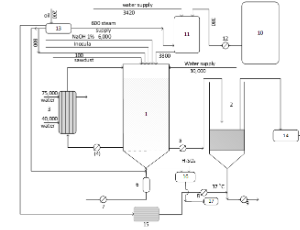
Developing Neo-bioplastics for the Realization of Carbon Sustainable Society
Akihito Nakanishi, Kohei Iritani, Yuri Sakihama
Plastic is a composite material made from organic polymers and can be freely molded into a film, fiber, or plate by heat or pressure processing. In 1839, Goodyear proposed the vulcanization of natural rubbers, while E. Simon discovered polystyrene
J Nanotechnol Nanomaterials, 2020, Volume Volume 1, Issue Issue 2, p72-85 | DOI: 10.33696/Nanotechnol.1.010
Oxidation and TD-DFT of Toxic Acriflavine Hydrochloride Dye by Potassium Permanganate in Neutral Media: Kinetics and Removal of Dyes from Wastewater
Samia M. Ibrahim, Ahmed F. Al-Hossainy, Hazim M. Ali, Mohamed Abd El Aal, Nasser Farhan
Fabrication of dye thin films is accomplished through physical vapor deposition with a thickness of 150 ± 5 nm. Kinetically, the reduction of permanganate ion as a multi-equivalent oxidant by acriflavine hydrochloride (ACFH) in a neutral medium has been studied spectrophotometrically. In the presence of a pseudo-first-order reaction, the experimental results suggest fractional first-order kinetics in [ACFH] and a first-order dependency in [MnO4-].
J Nanotechnol Nanomaterials, 2023, Volume Volume 4, Issue Issue 2, p75-88 | DOI: 10.33696/Nanotechnol.4.045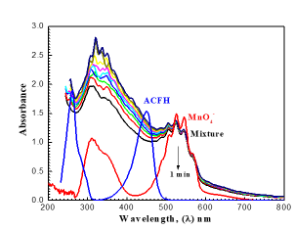
Using Intralipid to Improve Delivery of Anti-Cancer Nanodrugs: Effects on RES Clearance and Toxi city, EPR, and Immune Modulation
Li Liu, Chien Ho
Encapsulation of therapeutic molecules (e.g., small molecule inhibitors, mRNA, siRNA, aptamers, etc.) into nanomaterials can improve the solubility and blood circulation of the drugs, alter their biodistribution, decrease their toxicities, overcome drug resistance, and facilitate their entry into target cells. The development of anti-cancer nanodrugs has been the focus of intense study for decades. Several anti-cancer nanodrugs have been approved for clinical use all over the world.
J Nanotechnol Nanomaterials, 2021, Volume Volume 2, Issue Issue 2, p76-82 | DOI: 10.33696/Nanotechnol.2.023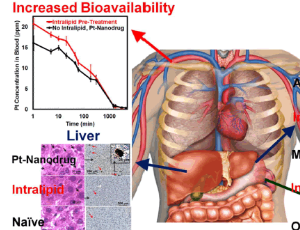
Enhancing p-type DSSC Performance through Nio-carbon Allotrope Hybrids: A Study of Functionalized MWCNT Integration
Nidhi Prajapati, Chivukula Narayana Murthy
In this study, we systematically investigated the influence of various carbon allotropes on the photovoltaic performance of p-type dye-sensitized solar cells (DSSCs) using nickel oxide (NiO) nanotubes as the base semiconductor. The selected carbon nanostructures multi-walled carbon nanotubes (MWCNTs), reduced graphene oxide (RGO), graphene quantum dots (GQDs), and fullerenes (C60) were integrated with NiO and evaluated based on their structural and electrochemical characteristics.
J Nanotechnol Nanomaterials, 2025, Volume Volume 6, Issue Issue 1, p76-88 | DOI: 10.33696/Nanotechnol.6.064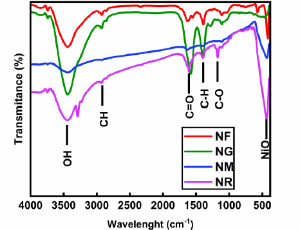
A Short Commentary of Nanotechnology on Traditional Chinese Medicine
Siukan Law, Dawn Chingtung Au, Albert Wingnang Leung, Chuanshan Xu
Nanotechnology is the art of science manipulating matter at the nanoscale about 1 to 100 nanometers, 10-9 nm ranging from a sheet of paper (100,000 nanometers thick) to a human hair (around 80,000-100,000 nanometers).
J Nanotechnol Nanomaterials, 2022, Volume Volume 3, Issue Issue 2, p77-78 | DOI: 10.33696/Nanotechnol.3.033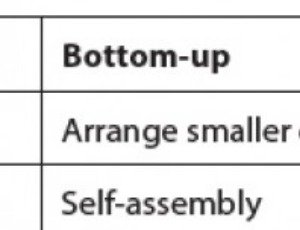
Biological and Non-Conventional Synthesis of Zinc Oxide Nanoparticles (ZnO-NPs): Their Potential Applications
Bhabesh Deka, Chittaranjan Baruah, Azariah Babu, Pankaj Kalita
In nature, nanoparticles can be found as natural or synthetic. Nanoparticles may form either physically or chemically. Nanoparticles are uniform types of common material whose dimensions are less than 100 nm. Volcanic ash, ocean spray, fine sand, and dust are some examples of natural nanoparticles.
J Nanotechnol Nanomaterials, 2022, Volume Volume 3, Issue Issue 2, p79-89 | DOI: 10.33696/Nanotechnol.3.034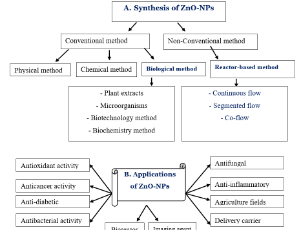
Colorful Conducting Polymer Nanocomposites Brighten up Silicon Solar Cells
Deying Luo, Lei-Ming Yu, Zheng-Hong Lu
Solar cells made of crystalline silicon (c-Si) have dominated the world’s solar energy market to date. Meanwhile, there is growing interest in adding new features or properties to c-Si solar cells such as vibrant colors that make them particularly attractive for decorative applications. Nevertheless, c-Si solar cells with regular p-n junctions present a
J Nanotechnol Nanomaterials, 2021, Volume Volume 2, Issue Issue 2, p83-87 | DOI: 10.33696/Nanotechnol.2.024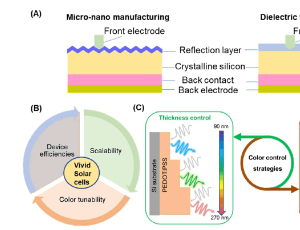
Cancer Nanomedicine: Strategies to Enhance Tumor Delivery and Immunotherapy
Yuwei Li, Min Luo
Cancer nanomedicine was originally developed for more efficient delivery of chemotherapeutic agents into tumor, and has been extensively employed as a therapeutic for cancer treatment owing to its unique features in drug delivery, diagnosis and imaging, as well as the therapeutic nature of some nanomaterials themselves.
J Nanotechnol Nanomaterials, 2020, Volume Volume 1, Issue Issue 3, p86-91 | DOI: 10.33696/Nanotechnol.1.011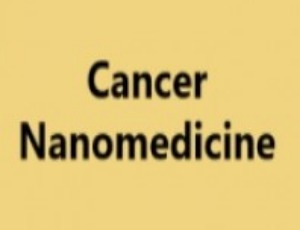
Nanotechnology for Water Purification – Current Trends and Challenges
M. P. Ajith, Paulraj Rajamani
Environmental pollution is a significant concern in both developing and developed countries. The pollution load in the environment accumulates as a result of anthropogenic activity. Both organic and inorganic contaminants are hazardous to living things, and their incidence and persistence have risen dramatically in current years.
J Nanotechnol Nanomaterials, 2021, Volume Volume 2, Issue Issue 2, p88-91 | DOI: 10.33696/Nanotechnol.2.025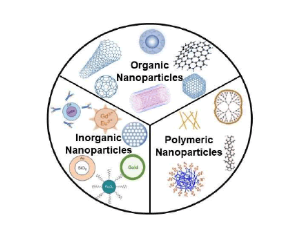
Enhanced Structural and Morphological Properties of Doped Cobalt Zinc Ferrite
Asmaa Reda Abd El-Salam, K. E. Rady, Ezzat A. ELFadaly, Mobarak Hassan Aly
In this study, Mn2+ substituted Co0.8−x Mnx Zn0.2 (where x = 0.0, 0.1, 0.2, and 0.3) ferrites are prepared by a coprecipitation method to study the effect of Mn2+ions on the structural and morphological properties. These ferrites are characterized by X-ray powder diffraction (XRD), and Fourier transform infrared. X-ray diffraction patterns of the prepared samples confirm partial substitution of Mn2+ ions that does not change the basic structure of Co0.8 Zn0.2 Fe2O4.
J Nanotechnol Nanomaterials, 2023, Volume Volume 4, Issue Issue 2, p89-93 | DOI: 10.33696/Nanotechnol.4.046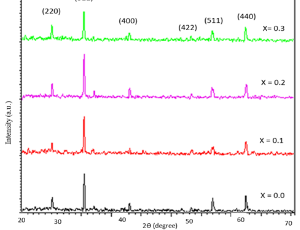
Weak Interactions in Catalysis
Xinyu Guo, Ziyang Feng, Bingyuan Zeng, TingTing Xia, Yuetong Zhao, Wenliang Zhang, Zumin Wang, Kun Zhao
Traditional catalytic theory has predominantly centered on static chemical bond processes, specifically the weakening, breaking, strengthening, and formation of chemical bonds – representing relatively fixed patterns of transformation. Whereas the dynamic regulatory mechanisms of weak interactions have been relatively understudied. This paradigm shift emerges from recognizing how precisely engineered 3D spatial arrangements govern catalytic efficiency: directional hydrogen bonds, size-matched hydrophobic cavities, and π-π stacking at optimal distances collectively create confined microreactors that steer reaction pathways.
J Nanotechnol Nanomaterials, 2025, Volume Volume 6, Issue Issue 1, p89-94 | DOI: 10.33696/Nanotechnol.6.065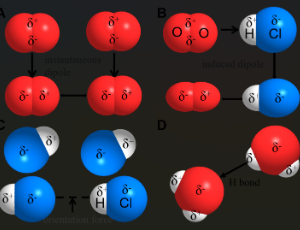
Electrochemical Supercapacitors Based on Hydrous RuO2/oxidized Multi-walled Carbon Nanotube Composites
Bo-Kyung Choi, Jae-Kyoung Ko, Byoung-Suhk Kim, Min-Kang Seo
Electrochemical properties of ruthenium oxide (RuO2)/oxidized multi-walled carbon nanotube (MWCNT) (RuO2/MWCNT) composite electrodes in supercapacitors were investigated. The electrodes were prepared by impregnating MWCNTs with different concentrations of RuCl3•xH2O solution, followed by chemical reduction and annealing at 150°C under a nitrogen atmosphere.
J Nanotechnol Nanomaterials, 2022, Volume Volume 3, Issue Issue 2, p90-96 | DOI: 10.33696/Nanotechnol.3.035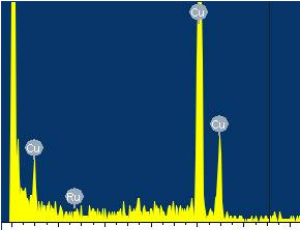
Current Progress in Vanadium Oxide Nanostructures and Its Composites as Supercapacitor Electrodes
Raktima Basu, Sandip Dhara
In recent time, supercapacitors (SCs) are one of the emerging technologies used for clean energy prospect. The higher power density, low specific energy, longer cycle life, and environmental affability made the SCs superior compared to conventional batteries. However, the scientific community is working towards increasing the specific energy of SCs by finding a suitable electrode material. Carbon materials, conducting polymers, and metal oxide or hydroxides are
J Nanotechnol Nanomaterials, 2020, Volume Volume 1, Issue Issue 3, p92-103 | DOI: 10.33696/Nanotechnol.1.012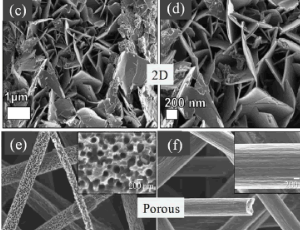
Toward Sustainable Photocatalysis—Insights on Green-Synthesized ZnO Nanoparticles for Ciprofloxacin Degradation
Abayomi Bamisaye, Mopelola Abidemi Idowu
The upsurge in world population has placed an active demand on the quest for a good life and industrialization. This has also resulted in the continual discharge of pollutants, which include heavy metals, cosmetic products, fertilizers, pesticides, pharmaceutical wastes, dyes, etc., into the available water bodies through various anthropogenic activities. Furthermore, the continual increase in the above-mentioned pollutants vis-à-vis pharmaceutical contaminants in the aquatic ecosystem is a call for concern.
J Nanotechnol Nanomaterials, Volume 6, Issue 2, p95-98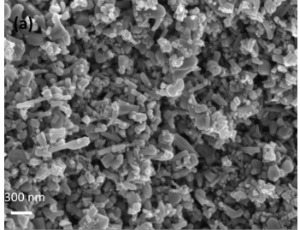
Green Nanotechnology: The Influence of Intermolecular and Supramolecular Interactions
Otávio Augusto Leitão dos Santos, Bianca Pizzorno Backx
In the last decade, the study of nanometer-scale particles has grown exponentially worldwide. This growth is due to the broad field of nanostructures applications, which, due to their dimensions in nanometric sizes, have new properties not found in micro and macro scale. These properties result from the increase in the ratio between the surface area and volume, and the nanostructures’ size directly influences these. Tolerance to temperature, variety of colors, changes in chemical reactivity,
J Nanotechnol Nanomaterials, 2020, Volume Volume 1, Issue Issue 3, p104-108 | DOI: 10.33696/Nanotechnol.1.013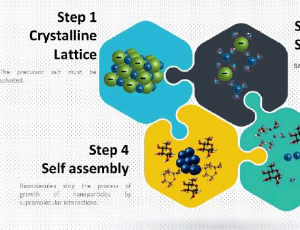
Rapid Inactivation of SARS-CoV-2 by Coupling Tungsten Trioxide (WO3) Photocatalyst with Copper Nanoclusters
Silvia Ghezzi, Isabel Pagani, Guido Poli, Sudipto Pal, Antonio Licciulli, Stefano Perboni, Elisa Vicenzi
At the end of 2019, a novel severe respiratory disease (coronavirus disease 2019, COVID-19) spread to Wuhan, China, it became pandemic in few months, with more than 41 million people infected worldwide as of October 2020. COVID-19 is caused by a novel virus called severe acute respiratory syndrome (SARS) CoV-2 to distinguish it from SARS-CoV that emerged in Guangdong province in China in 2003 and caused the severe clinical condition known as SARS. Like SARS-CoV, SARS- CoV-2 causes a severe inter
J Nanotechnol Nanomaterials, 2020, Volume Volume 1, Issue Issue 3, p109-115 | DOI: 10.33696/Nanotechnol.1.014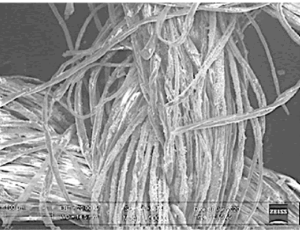
Quantifying Respiratory Airborne Particle Dispersion Control Through Improvised Reusable Masks: The Physics of Non-Pharmaceutical Interventions for Reducing SARS-CoV-2 (COVID-19) Airborne Transmission
Nathan J. Edwards, Rebecca Widrick, Richard Potember, Mike Gerschefske
In light of the current pandemic from rapid transmission of the severe acute respiratory syndrome coronavirus 2 (SARS-CoV-2 or COVID-19) and significant morbidity, there has been inconsistent medical guidance given to the public regarding the wearing of non-medical improvised fabric masks or face coverings to reduce the transmission of COVID-19.
J Nanotechnol Nanomaterials, 2020, Volume Volume 1, Issue Issue 3, p116-128 | DOI: 10.33696/Nanotechnol.1.015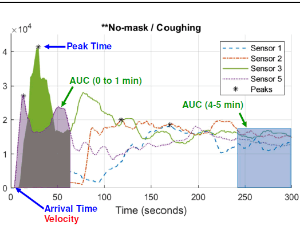
About Scientific Archives
Scientific Archives is a global publisher initiated with the mission of ensuring equal opportunity for accessing science to research community all over the world. Spreading research findings with great relevance to all channels without any barrier is our goal. We want to overcome the challenges of Open Access with ensured quality and transparency.
